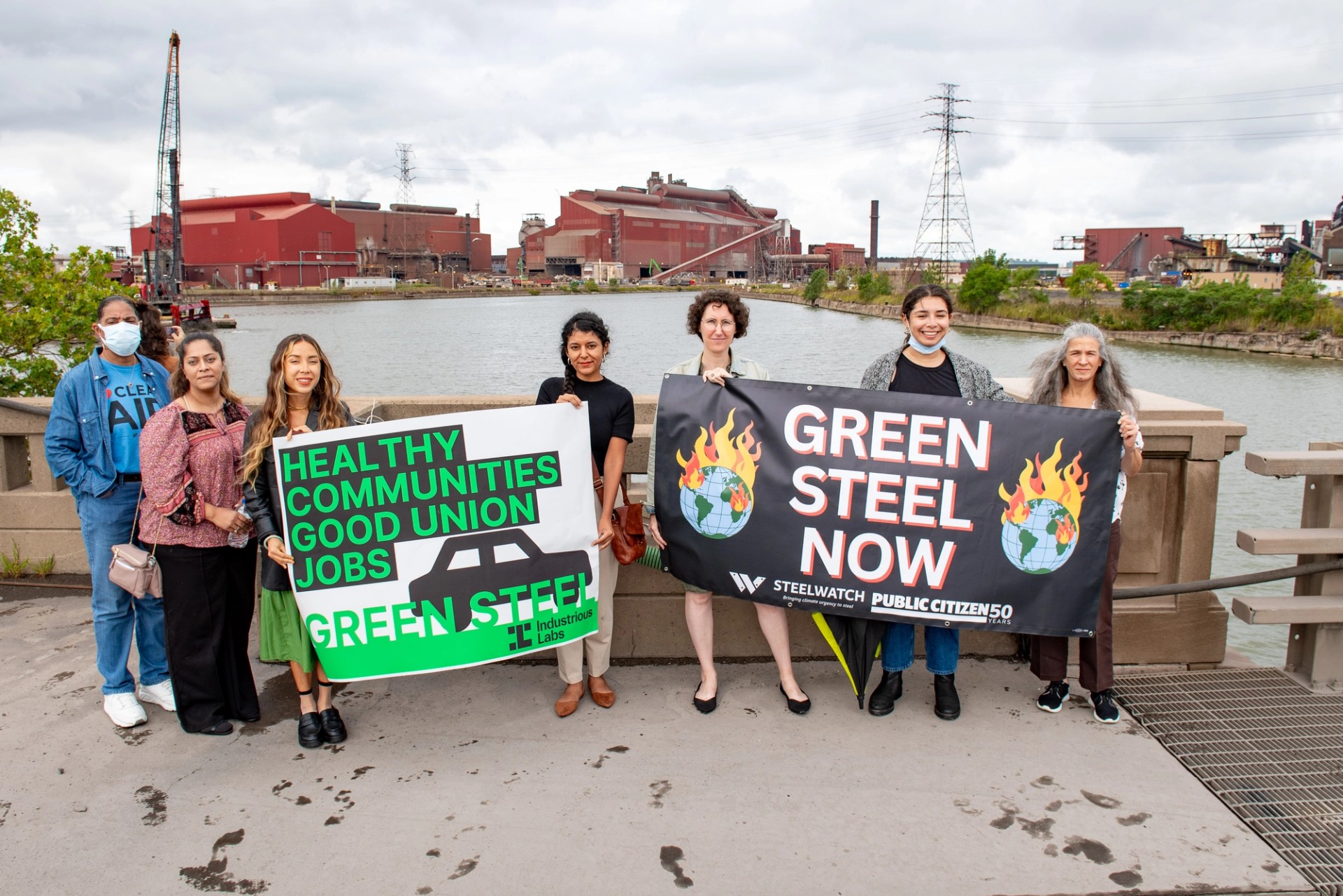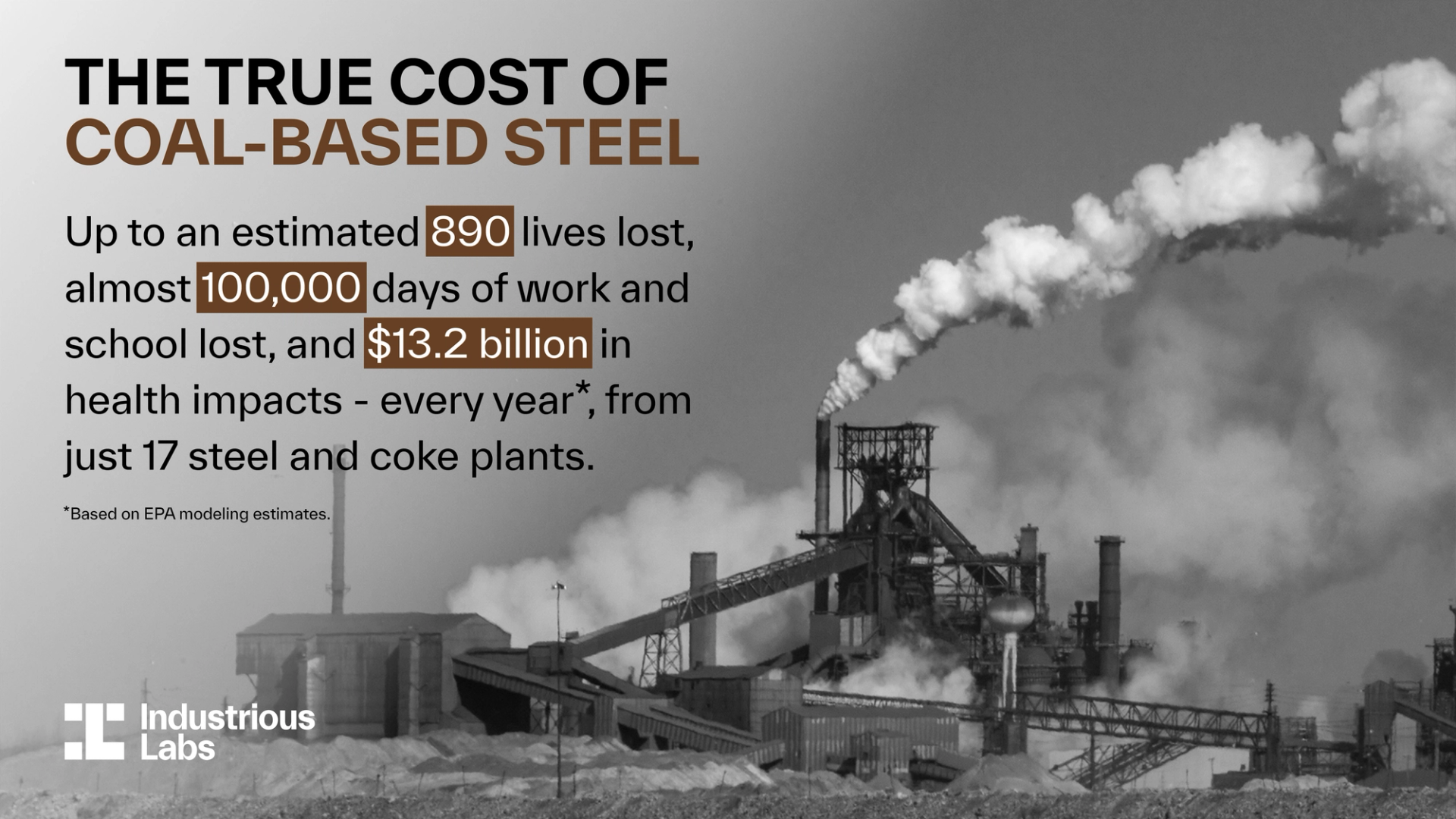Coal Is Not Critical: A Clean Future for Steelmaking
Hilary Lewis, Steel Director at Industrious Labs

On April 8th, President Trump issued an Executive Order directing the Secretary of Energy to assess whether coal used in steel production qualifies as a “critical material” or “critical mineral” under the Energy Act of 2020. This misguided attempt to anchor the future of American iron and steelmaking in the technologies of the past puts our global competitiveness, health and climate at risk. And, of course, coal simply is not critical to iron and steelmaking.
Coal Is Not Critical. It’s Obsolete.
Under the Energy Act of 2020, a material is deemed “critical” if it is “essential” to one or more technologies and if its supply chain is vulnerable to disruption. However, metallurgical coal for steelmaking does not meet these criteria. While it has historically played a role in conventional blast furnace steelmaking, it is no longer needed. Today, viable and scalable alternatives exist, most notably green hydrogen direct-reduced iron (H2-DRI), which eliminates the need for coal.
Green hydrogen DRI improves upon an existing technology already deployed across the U.S., methane gas DRI. While methane gas DRI already operates without coal, further undermining the argument that coal is essential to iron and steelmaking, it is not a clean technology because methane gas is a fossil fuel. However, companies like SSAB in Sweden have demonstrated that it is possible to replace methane gas with green hydrogen produced from renewable energy, thereby eliminating the need for fossil fuels.
Rather than entrenching coal in federal materials policy, the U.S. should focus on strengthening its leadership in clean steel innovation. According to the Bipartisan Policy Center, “Inclusion can make a specific type of mineral project eligible for federal funding, subject to a streamlined permitting process, or more competitive due to fees placed on imports.” Designating metallurgical coal as a “critical material” would artificially prop up a dying industry, pave the way for more pollution, and undermine our climate competitiveness.
Costs of Coal
Our recent report on coal-based steelmaking, “Dirty Steel, Dangerous Air”, found that the industry is responsible for up to an estimated $13.2 billion in health costs, 892 premature deaths, and almost 100,000 lost school and work days annually. In contrast, recent analysis from RMI found that replacing the blast furnace with green-hydrogen direct-reduced iron (DRI) is estimated to nearly eliminate carbon monoxide, volatile organic compounds (VOCs), and sulfur dioxide, and reduce particulate matter by an estimated 70% while dramatically reducing nitrous oxide emissions. These results are in addition to nearly eliminating climate pollution.

Clean steel can also directly benefit union workers. Cleveland-Cliffs' plan to convert a coal-based furnace to methane gas DRI will increase jobs at the site by 170 workers, according to the company. A study from the Ohio River Valley Institute on transitioning the Mon Valley Works in Pennsylvania to green hydrogen DRI-EAF similarly found that the total number of jobs would go up, notably reversing the current trend of job loss.
The Future of Clean Steel
The transition to fossil-free steelmaking offers the U.S. a “critical” opportunity that doesn’t rely on coal. By investing in domestic green hydrogen production, renewable energy, and modern steel mills, we can protect jobs, public health, and our climate.
The Executive Order’s call to instead consider coal as “critical” is a backward step that ignores the reality of steel’s technological evolution. In fact, the U.S. has made this mistake before, ceding huge numbers of jobs to other countries that invest in modern technology and decimating the Rust Belt in the process. We can’t afford to be late adopters of clean, modern technology again. Coal is not critical to the U.S. economy, but clean steel is. We should be investing in the materials, technologies, and workforce that will define the next century of American industry, rather than clinging to the outdated, polluting practices of the past.